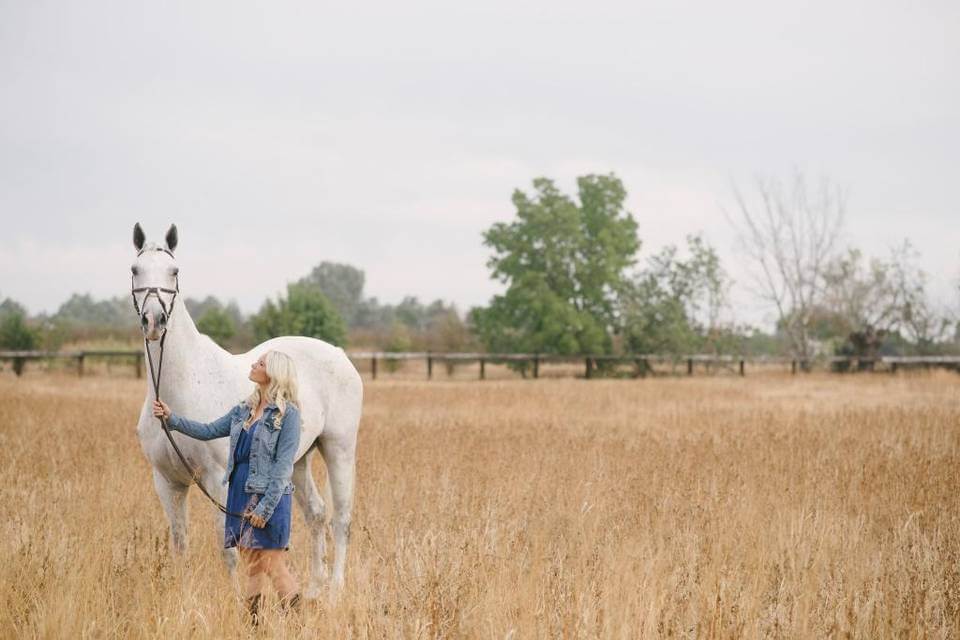UPDATE: Both federal and state officials are investigating Western Milling, the feed manufacturer accused of producing horse feed that killed and sickened horses. A lawyer for the ranch said FDA officials confirmed the horses’ feed had monensin in it.
“No specific findings, as of yet, are being made public,” Janet McDonald, a spokeswoman for the FDA’s Los Angeles office, said. “This is an open investigation, so we have not come to any conclusions yet.”
The California Department of Food and Drug and Agriculture has launched its own investigation, and that agency also isn’t discussing any findings yet.
The owner of horse training and riding lesson business in California is seeking a settlement after thirteen of her horses died as a result of contaminated horse feed and thirty-six more horses suffered permanent neurological damage.
The nightmare began in September when three horses at Katie Flanigan’s Black Fence Farm boarding stable in Fresno suddenly became violently ill, collapsed and died after eating feed that was contaminated with monensin.
Lab results confirmed the deaths of three California horses were caused by monensin toxicity.
Shortly after, two more horses had to be euthanized due to their failing health, bringing the death toll to five.
“We were in panic. We had no idea what was happening” Flanigan says.
The culprit, she later found out, was contaminated feed. Necropsies performed on two of the dead horses showed that they died of heart failure.
Before it was over, a total of thirteen horses died outright or had to be put down, she said.
Meanwhile, the fate of another 36 horses at the ranch remains uncertain. All suffered permanent neurological damage, Flanigan said.
“They do not ever recover,” Katie Flanigan said.
The deadly ingredient
Flanigan had the horse feed tested, and a lab confirmed her suspicion: monensin had been discovered in the feed.
“We found it in the autopsy of the horses and in feed batches through multiple labs that have tested it,” she said.
Monensin was detected in the pelleted feed at a concentration of 130 ppm. According to Veterinary Toxicology feeding Monensin at a concentration of 121 ppm is toxic to horses. In horses, monensin affects the heart and skeletal muscles with symptoms usually appear between 12 and 72 hours after ingesting a toxic dose. Permanent cardiac damage is possible, even in horses that appear to have recovered.
The feed, which came from Western Milling, was tainted with monensin, a common additive for poultry and cattle feeds to improve feed efficiency and rates of weight gain, but that is highly toxic to horses.
Cross-contamination in the milling process during the formulation of equine feed, due to human error, is one way horses can become exposed.
The California Department of Food and Agriculture confirms it has launched an investigation regarding the tainted feed.
Western Milling’s mistake
Following the deaths of Flanigan’s horses, Western Milling recalled its horse feed sold in California and Arizona. The company issued a notice on September 25, announcing a recall for its Western Blend Horse Feed, due to “potential Monensin contamination.” They recalled 50 lb bags of Western Blend horse feed, lot number 5251, manufactured on September 8, 2015.
The company said that all stores where the bags were sold have been notified. However, according to the notice, of the 1,100 bags being recalled, “all but 67 bags have been reclaimed by the company.”
A tragic fate
Flanigan says a 16-year-old Hanoverian named Turtle could barely walk (below) within 48 hours of being fed the pelleted feed from a new shipment of Western Blend Horse Feed. The gelding’s symptoms included paralysis, weakness, increased thirst, and seizures. The decorated show horse was leased by a 13-year-old teenager who stayed with him until his death.
“We are devastated and paralyzed by what this feed company has done to us,” Flanigan says. “We are watching our beloved horses die before our eyes and there is nothing we can do to help them.”
Turtle’s necropsy, states the horse suffered from monensin toxicity with multifocal, myofiber degeneration. Monensin was detected in the horse’s stomach at a concentration of 1.7 ppm.
Hospice care
Right now her days are spent caring for the horses that survived.
“It’s similar to a hospice” because they are so ill, she said. “They trip and fall a lot,” she said. “Some days they are in distress, and the next they’ll be OK.”
Swelling of the legs and face, weak muscles, poor coordination and poor balance are common. It’s unknown if they will die, she said.
There is no known antidote to monensin poisoning in horses. The other horses at the facility have consumed the same feed and their monensin intoxication means they can no longer be used as riding animals, Flanigan said.
“That’s been the hardest part for me,” she said. “These horses are not recovering, they’re only going to get worse.”
Cyanide in baby aspirin
Flanigan’s father compared the situation to making cyanide in a baby aspirin factory.
“It is unconscionable,” Philip Flanigan tells us. “The owners of the horses are asking us ‘how do we make sure this doesn’t happen to other horses?'”
The only horses at the ranch that didn’t suffer were two older horses that didn’t get the bad feed because they were on a special diet, she said.
For now, she’s taking it a day at a time.
“You just don’t know how to feel sometimes,” she said. “It’s very sad.”
This is the fourth case of feed tainted by monensin that has been publicized in the U.S. since fall 2014.
“We again have an entire stable of horses that have been dealt a death sentence because of tainted feed… This is yet another preventable tragedy that has repeated itself.”
SOURCE: Riding facility tries to pick up the pieces after horses fall ill, die

